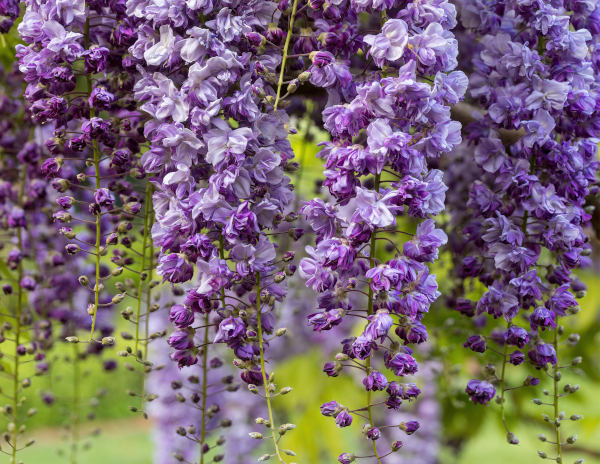How to grow Wisteria Floribunda
Wisteria floribunda or Japenese Wisteria is a flowering plant from the family Fabaceae. Growing to whopping heights of 9m, Wisteria floribunda is a beautiful and eye-catching climber with hanging flower clusters or Racemes of purples, whites and blues.
Long-lasting in nature, Wisteria floribunda can take up to 20 years to bloom from seed! However, starting with a young plant can help speed up the process – then you should only be waiting a couple of years for your first bloom.
Easy to grow and sweetly scented, Wisteria floribunda can be planted in the spring and grown on a range of structures such as walls, fences, strong pergolas and arches. With 24 of its cultivars awarded the Award of Garden Merit by the Royal Horticultural Society (RHS), Wisteria floribundas are a must-have for cottage and informal gardens.
Ready to learn everything there is to know about Wisteria floribunda? Read on to find out...
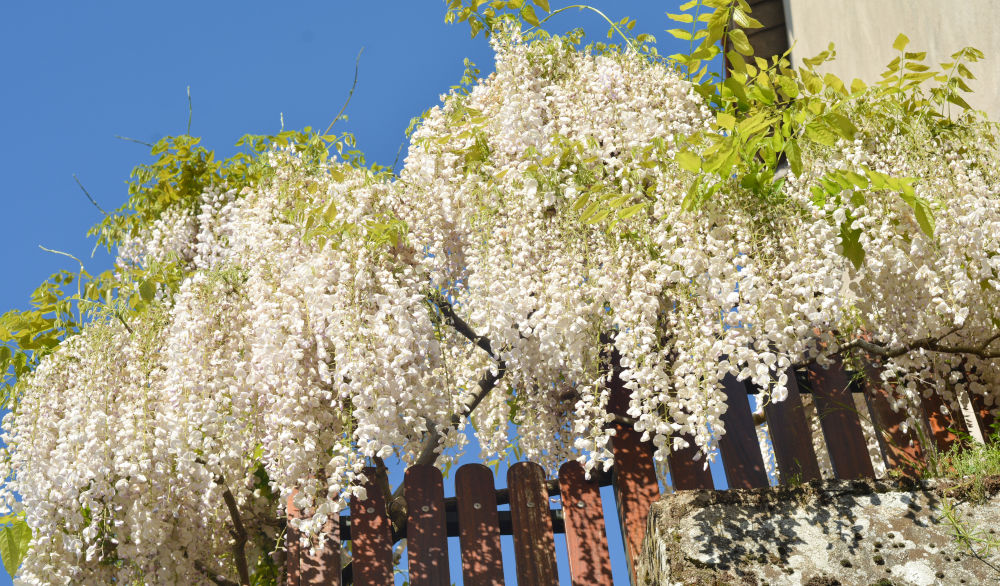
Key Information
Soil pH
Position
Hardiness

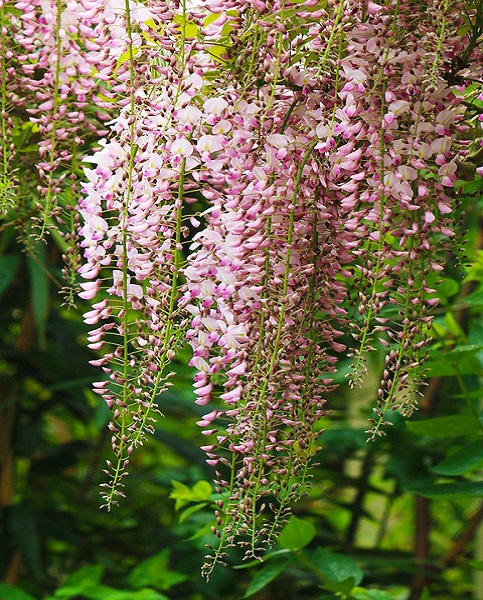
Where & when to plant Wisteria Floribunda
Wisteria floribunda enjoys partial sun and partial shade; more sun can bring with it more prominent flowering. When growing Wisteria floribunda, give it plenty of room to spread and be prepared to wait; if growing from a young plant, it can take a couple of years for its first bloom as the flowers grow from the previous year’s wood.
How to plant Wisteria Floribunda
Start by choosing a suitable position on your garden wall or structure that benefits from sun at least 2-4 hours per day.
Prepare the soil in your desired position and make sure that it drains well - Wisteria floribunda should not be waterlogged, and UK rains can affect this.
Once the soil is prepared, dig a hole that is as deep as the root ball and twice as wide. When planting multiple Wisteria or with companion plants, plant each at least 3m apart to allow for spreading.
Water wisteria once a week whilst the plant is establishing. In the spring, apply a layer of mulch to retain moisture and deter weeds.
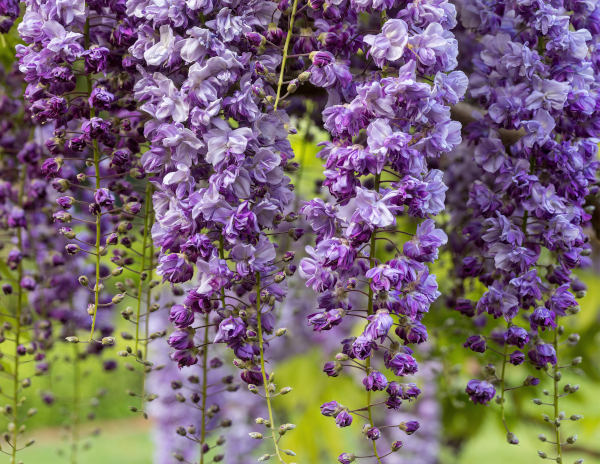
What to plant with Wisteria Floribunda
As a climbing plant, you can pair Wisteria floribunda with other climbers such as clematis. Clematis are not as tall as Wisteria floribunda and make good companions due to their similar growing environments, sun-loving habit and range of bloom colours available. Clematis montana ‘Rubens’ will add pale pinks to your garden wall while Clematis montana ‘Grandiflora’ will add award-winning, bright whites. You can also plant Wisteria floribunda with its close cousin Wisteria sinensis to combine twines!
Please contact our excellent Customer Care Team if you would like any help or planting tips for your Wisteria floribunda. Below are a few ideas to help get you started.
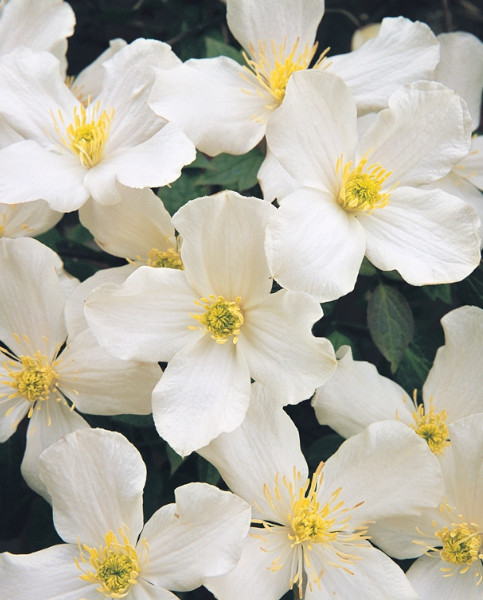
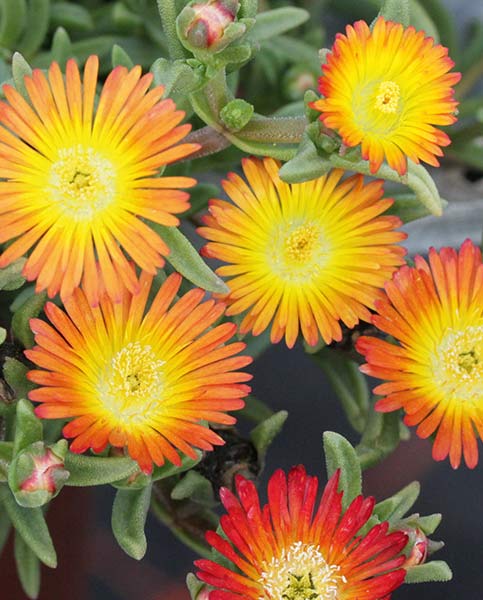
How to care for Wisteria Floribunda
Pruning & Deadheading
Once your Wisteria floribunda is established, you will need to prune your wisteria twice a year.
Summer pruning (July or August)
Cut back the whippy green shoots of the current year’s growth to five or six leaves after flowering in July or August. This controls the size of the wisteria and encourages it to form flower buds rather than green growth.
Winter pruning (January or February)
Then, cut back the same growth to two or three buds in January or February (when the plant is dormant and leafless) to tidy it up before the growing season begins and get full appreciation of the blooms.
Watering
Water your Wisteria floribunda regularly, being careful not to ensure there is plenty of drainage and do not let the soil get too dry. In extended periods of hot or dry weather, water more frequently.
Cold Protection
Wisteria floribunda is a fully hardy perennial, withstanding temperatures as low as -15°C and will not need much in the way of cold protection. Mulching once a year in the spring can aid moisture retention and healthy growth.
Pests & Diseases
Wisteria floribunda is generally pest resistant. In terms of diseases, look out for powdery mildew and leaf spot - characterised by white powdery fungus on your leaves or dark brown spots. Treat quickly and remove these leaves from the plant as soon as you can to prevent the spread of these diseases.
How to propagate Wisteria Floribunda
The best way to propagate Wisteria floribunda is by taking hardwood cuttings in the winter once the plant is established
Using clean and sharp tools, take pencil-width hardwood cuttings in lengths of around 60cm. For each cutting you take, trim from just above a leaf joint or bud. Add each cutting to water once taken to reduce moisture loss
Once you have taken all your cuttings, cut each 60cm piece into several shorter 15cm stems with at least two sets of leaves on each. Cut horizontally while taking each cutting and then cut the bottom of each cutting diagonally to support water absorption - this will also help you to identify the bottom of the cutting to grow it the right way up!
Add each cutting to cuttings compost, each with its own hole - you can use a pencil to create deep, thin holes - leaving 2-3 buds above the soil line. Firm the compost around the cutting and water in. Place a plastic or polythene bag over each of your cutting’s pots to create humidity and water once a week until each cutting is ready for potting on.
Common Wisteria Floribunda Questions
What is the difference between Wisteria floribunda and sinensis?
Two of the most common Wisteria floribuna cultivars, Wisteria floribunda and Wisteria sinensis are often confused. However, there are differences between the two. Wisteria floribunda (Japanese Wisteria) has larger leaves, has violet flowers and remains in bloom for longer than Wisteria sinensis (Chinese Wisteria). Wisteria sinensis twines anticlockwise and can tolerate partial shade, whereas Wisteria floribunda is more compact, twines clockwise and needs full sun.
How do you take care of Wisteria floribunda?
The way to give your Wisteria floribunda the best possible start is by growing it against a sturdy backdrop - ideally a wall or solid structure - in moist, well-draining soil. Mulch around the base of Wisteria floribunda to help the soil retain moisture and water moderately in periods of dry weather.
Is Wisteria floribunda toxic to dogs?
Yes, Wisteria floribunda - as with other Wisteria - can be toxic to dogs and cats (this includes its seeds and pods)
